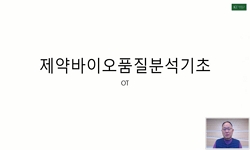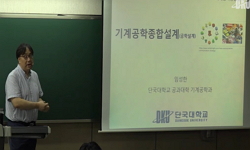Objective: The purpose of this study was a teacher efficacy scale for pre-service teacher and to examine the reliability and validity of the scale. Methods: Participants for this study were 428 pre-service teachers from G region. the data were analyze...
http://chineseinput.net/에서 pinyin(병음)방식으로 중국어를 변환할 수 있습니다.
변환된 중국어를 복사하여 사용하시면 됩니다.
- 中文 을 입력하시려면 zhongwen을 입력하시고 space를누르시면됩니다.
- 北京 을 입력하시려면 beijing을 입력하시고 space를 누르시면 됩니다.

예비유아교사 교사효능감 척도(PS-TES) 타당화 = The Validation of Pre-service Teacher Efficacy Scale for Preschool Teachers
한글로보기https://www.riss.kr/link?id=A106104958
-
저자
이채호 (울산대학교)
- 발행기관
- 학술지명
- 권호사항
-
발행연도
2019
-
작성언어
Korean
-
주제어
예비유아교사 ; 타당화 ; 교사효능감 ; pre-service teacher ; validation ; teacher efficacy
-
등재정보
KCI등재
-
자료형태
학술저널
- 발행기관 URL
-
수록면
117-127(11쪽)
-
KCI 피인용횟수
4
- DOI식별코드
- 제공처
-
0
상세조회 -
0
다운로드
부가정보
다국어 초록 (Multilingual Abstract)
Methods: Participants for this study were 428 pre-service teachers from G region. the data were analyzed using correlation, Cronbach's a, Exploratory Factor Analysis (EFA) and Confirmatory Factor Analysis (CFA).
Results: The pre-service teacher efficacy scale was consisted of 3 factors, ‘efficacy for instructional strategies’, ‘efficacy for student engagement’ and ‘efficacy for classroom management’ with 12 items. Cronbach's a was ranged from .72 to .82. The confirmatory factor analysis revealed that CMIN/DF = 1.59, RMSEA = .05, SRMR = .05, TLI = .96, CFI = .97.
Conclusion/Implications: In conclusion, all these results show that the pre-service teacher efficacy scale is quite a reliability and validity.
Objective: The purpose of this study was a teacher efficacy scale for pre-service teacher and to examine the reliability and validity of the scale.
Methods: Participants for this study were 428 pre-service teachers from G region. the data were analyzed using correlation, Cronbach's a, Exploratory Factor Analysis (EFA) and Confirmatory Factor Analysis (CFA).
Results: The pre-service teacher efficacy scale was consisted of 3 factors, ‘efficacy for instructional strategies’, ‘efficacy for student engagement’ and ‘efficacy for classroom management’ with 12 items. Cronbach's a was ranged from .72 to .82. The confirmatory factor analysis revealed that CMIN/DF = 1.59, RMSEA = .05, SRMR = .05, TLI = .96, CFI = .97.
Conclusion/Implications: In conclusion, all these results show that the pre-service teacher efficacy scale is quite a reliability and validity.
국문 초록 (Abstract)
본 연구의 목적은 Ohio State Teacher Efficacy Scale(OSTES)을 활용하여 예비유아교사 교사효능감 척도(PS-TES)를 타당화 하는데 있다. 이를 위한 본 연구는 G지역에 소재한 3년제 대학 유아교육과 3학년 ...
본 연구의 목적은 Ohio State Teacher Efficacy Scale(OSTES)을 활용하여 예비유아교사 교사효능감 척도(PS-TES)를 타당화 하는데 있다. 이를 위한 본 연구는 G지역에 소재한 3년제 대학 유아교육과 3학년 재학생 428명을 대상으로 설문지를 실시하였다. 척도의 타당도와 신뢰도를 확인하기 위해 탐색적 요인분석과 신뢰도(Cronbach's a)계수, 상관분석 및 확인적 요인분석(CFA)을 실시하였다. 본 연구의 결과를 연구문제를 중심으로 살펴보면 다음과 같다. 첫째, 예비유아교사 교사효능감 척도(PS-TES)의 하위요인을 살펴보기 위해 탐색적 요인 분석 결과 3개의 하위요인(교수전략 효능감, 학생참여 효능감, 교실관리 효능감)으로 나타났으며 총 문항은 12문항으로 이루어졌다. 예비유아교사 교사효능감 척도(PS-TES)의 하위요인 신뢰도는 ‘교수전략 효능감’ .82, ‘학생참여 효능감’ .72, ‘교실관리 효능감’ .76으로 나타났으며 전체 신뢰도는 .87로 나타났다. 둘째, 예비유아교사 교사효능감 척도(PS-TES)의 타당도를 살펴보기 위해 확인적 요인분석(CFA)을 실시한 결과 모델 적합도는 CMIN/DF = 1.59, RMSEA = .05, SRMR = .05, NNFI = .96, CFI = .97로 나타나 예비유아교사 교사효능감 척도(PS-TES)가 적합한 측정도구임이 확인되었다.
참고문헌 (Reference)
1 교육과학기술부, "창의적체험활동. 교육과학기술부 고시, 제2011-361호"
2 한석실, "유치원 교사의 교사효능감 확인 연구" 미래유아교육학회 10 (10): 207-240, 2003
3 장영숙, "유아교육기관 교사의 교육신념 및 교수 효능감과 총체적 언어교수법과의 관계" 한국유아교육학회 24 (24): 23-43, 2004
4 김선영, "유아교사의 교사효능감 개념과 측정구조에 대한 분석" 한국유아교육학회 25 (25): 267-287, 2005
5 김선영, "유아 교사 효능감 척도 개발 연구" 한국아동학회 31 (31): 91-110, 2010
6 최현정, "예비유아교사의 교사효능감 척도 타당화 연구" 한국유아교육ㆍ보육복지학회 22 (22): 85-108, 2018
7 신혜영, "어린이집 교사의 직무 스트레스와 효능감이 교사 행동의 질에 미치는 영향" 한국아동학회 26 (26): 105-122, 2005
8 유효순, "아동발달" 창지사 2007
9 문수백, "구조방정식모델링의 이해와 적용" 학지사 2009
10 홍세희, "구조 방정식 모형의 적합도 지수 선정기준과 그 근거" 19 (19): 161-177, 2000
1 교육과학기술부, "창의적체험활동. 교육과학기술부 고시, 제2011-361호"
2 한석실, "유치원 교사의 교사효능감 확인 연구" 미래유아교육학회 10 (10): 207-240, 2003
3 장영숙, "유아교육기관 교사의 교육신념 및 교수 효능감과 총체적 언어교수법과의 관계" 한국유아교육학회 24 (24): 23-43, 2004
4 김선영, "유아교사의 교사효능감 개념과 측정구조에 대한 분석" 한국유아교육학회 25 (25): 267-287, 2005
5 김선영, "유아 교사 효능감 척도 개발 연구" 한국아동학회 31 (31): 91-110, 2010
6 최현정, "예비유아교사의 교사효능감 척도 타당화 연구" 한국유아교육ㆍ보육복지학회 22 (22): 85-108, 2018
7 신혜영, "어린이집 교사의 직무 스트레스와 효능감이 교사 행동의 질에 미치는 영향" 한국아동학회 26 (26): 105-122, 2005
8 유효순, "아동발달" 창지사 2007
9 문수백, "구조방정식모델링의 이해와 적용" 학지사 2009
10 홍세희, "구조 방정식 모형의 적합도 지수 선정기준과 그 근거" 19 (19): 161-177, 2000
11 김아영, "교사효능감 척도 타당화" 한국교육심리학회 18 (18): 37-58, 2004
12 신은수, "가장놀이에 대한 교사교육이 교사의 놀이교수 효능감 및 놀이 개입 실제와 유아의 가장놀이 사회적 수준에 미치는 영향" 한국유아교육학회 26 (26): 287-310, 2006
13 Riggs, I. M., "Toward the development of an elementary teacher’s science teaching efficacy belief instrument" 74 (74): 625-637, 1990
14 Henson, R. K., "The relationship between means-end task analysis and context specific and global efficacy in emergency certification teachers:Exploring a new model of self-efficacy" 2000
15 Guskey, T. R., "The influence of change in instructional effectiveness upon the affective characteristics of teachers" 21 : 245-259, 1984
16 Rose M Allinder, "The Relationship Between Efficacy and the Instructional Practices of Special Education Teachers and Consultants" SAGE Publications 17 (17): 86-95, 2016
17 Browne, M. W., "Testing Structural Equation Models" Sage 1993
18 Tschannen-Moran, M., "Teacher efficacy: Its meaning and measure" 68 (68): 202-248, 1998
19 Tschannen-Moran, M., "Teacher efficacy: Capturing an elusive construct" 17 : 783-805, 2001
20 Sherri Gibson, "Teacher efficacy: A construct validation" American Psychological Association (APA) 76 (76): 569-582, 1984
21 Moore, W., "Teacher efficacy, power, school climate and achievement: A desegregating district’s experience" 1992
22 Thomas R. Guskey, "Teacher Efficacy: A Study of Construct Dimensions" American Educational Research Association (AERA) 31 (31): 627-643, 2016
23 John A. Ross, "Teacher Efficacy and the Effects of Coaching on Student Achievement" JSTOR 17 (17): 51-65, 1992
24 Bandura, A., "Self-efficacy: Toward a unifying theory of behavioral change" 84 (84): 191-215, 1977
25 Bandura, A., "Self-efficacy: The exercise of control" W. H. Freeman and Company 1997
26 Woolfolk Hoy, A., "Self-efficacy of adolescents" Information Age Publishing 117-137, 2006
27 Bandura, A., "Self-efficacy beliefs of adolescents (Vol. 5)" Information Age Publishing 307-337, 2006
28 Anderson, R. N., "Relationships among teachers’and students’ thinking skills, sense of efficacy, and student achievement" 34 (34): 148-165, 1988
29 Woolfolk, A. E., "Prospective teachers’sense of efficacy and beliefs about control" 82 : 81-91, 1990
30 Kline, R. B., "Principles and practice of structural equation modeling" Guilford Press 2005
31 McDonald, R. P., "Principles and practice in reporting structural equation analyses" 7 (7): 64-82, 2002
32 MacCallum, R. C., "Power analysis and determination of sample size for covariance structure modeling" 1 (1): 130-149, 1996
33 Ashton, P. T., "Making a difference: Teachers’ sense of efficacy and student achievement" Longman 1986
34 Berman, P., "Federal programs supporting educational change: Vol. VII. Factor affecting implementation and continuation" Rand Corporation 1977
35 Shaffer, D. R., "Developmental psychology: Childhood and adolescence" Cengage 2014
36 Li‐tze Hu, "Cutoff criteria for fit indexes in covariance structure analysis: Conventional criteria versus new alternatives" Informa UK Limited 6 (6): 1-55, 1999
37 Midgley, C., "Change in teacher efficacy and student self-and task-related beliefs in mathematics during the transition to junior high school" 81 (81): 247-258, 1989
38 김연하, "Bandura의 교사 자기 효능감 척도(Teacher Self-efficacy Scale) 요인구조 분석" 한국유아교육학회 28 (28): 169-191, 2008
39 Armor, D., "Analysis of the school preferred reading programs in selected Los Angeles minority schools" Rand Corporation 1976
40 Hall, B., "An attempt to explicate teacher efficacy beliefs among first year teachers" 1992
41 통계청, "9월 인구동향(출생, 사망, 혼인, 이혼). 정책 뉴스"
동일학술지(권/호) 다른 논문
-
- 한국보육학회
- 김미숙
- 2019
- KCI등재
-
유아교사의 교사전문성과 직무만족도가 교수효능감에 미치는 영향
- 한국보육학회
- 허은하
- 2019
- KCI등재
-
어머니의 불안정 애착성과 유아의 놀이성 간의 관계에 대한 어머니의 놀이중심지지 신념의 조절효과
- 한국보육학회
- 채민경
- 2019
- KCI등재
-
- 한국보육학회
- 손수민
- 2019
- KCI등재
분석정보
인용정보 인용지수 설명보기
학술지 이력
| 연월일 | 이력구분 | 이력상세 | 등재구분 |
|---|---|---|---|
| 2022 | 평가예정 | 재인증평가 신청대상 (재인증) | |
| 2019-01-01 | 평가 | 등재학술지 유지 (계속평가) |  |
| 2016-01-01 | 평가 | 등재학술지 유지 (계속평가) |  |
| 2012-01-01 | 평가 | 등재학술지 선정 (등재후보2차) |  |
| 2011-01-01 | 평가 | 등재후보 1차 PASS (등재후보1차) |  |
| 2009-01-01 | 평가 | 등재후보학술지 선정 (신규평가) |  |
학술지 인용정보
| 기준연도 | WOS-KCI 통합IF(2년) | KCIF(2년) | KCIF(3년) |
|---|---|---|---|
| 2016 | 1.92 | 1.92 | 2.04 |
| KCIF(4년) | KCIF(5년) | 중심성지수(3년) | 즉시성지수 |
| 1.97 | 1.93 | 2.336 | 0.89 |




 ScienceON
ScienceON DBpia
DBpia





